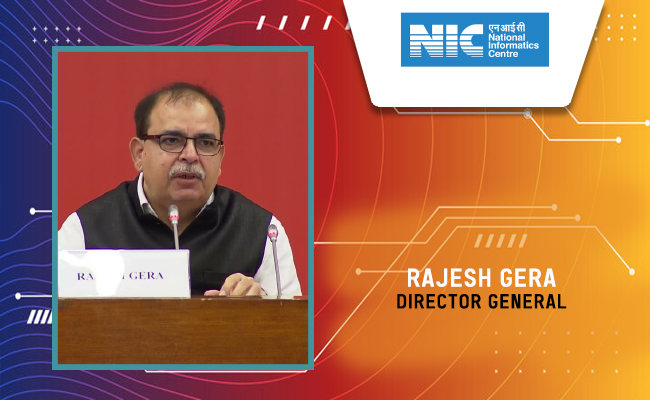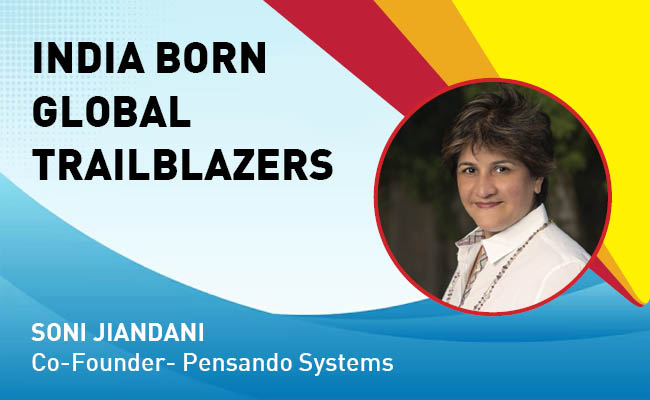IT Software : Growth, Trends, and Future Prospects
By MYBRANDBOOK

India’s IT software industry has long been a pillar of the country’s economic growth, contributing significantly to GDP, employment, and global technological advancement. In 2023, this sector demonstrated remarkable resilience and adaptability, navigating through global challenges while capitalizing on emerging opportunities.
India’s IT software sector stands as a cornerstone of the nation’s economic framework, significantly influencing GDP and employment rates. Over the past few decades, it has cemented its reputation as a global leader in technological innovation and service delivery. 2023 was a pivotal year for this industry, characterized by both impressive growth and formidable challenges. The year saw the industry reaching new heights with a market size of $227 billion, marking a 9% increase from the previous year, as reported by NASSCOM. This growth was fueled by an accelerated digital transformation across various sectors and an increased reliance on technology solutions in the wake of global disruptions.
The export revenue of $194 billion underscored India’s essential role as a global IT hub, supplying software solutions and services to businesses worldwide. Domestically, the market expanded to $33 billion, thanks to the government’s push for digital adoption through initiatives like Digital India. This dual growth trajectory highlights the industry’s resilience and its critical role in the global and local economies.
Despite the robust growth, 2023 was not without its challenges. The industry had to navigate geopolitical tensions, talent shortages, and evolving cybersecurity threats. However, Indian IT firms showcased their agility by adapting to these hurdles through strategic investments in emerging technologies such as artificial intelligence (AI), cloud computing, and cybersecurity solutions. These investments not only addressed immediate Challenges but also positioned the industry for future advancements.
The performance of major Indian software companies like TCS, Infosys, Wipro, HCL Technologies, and Tech Mahindra was a testament to the industry’s health. These firms reported significant revenue growth, driven by their focus on digital transformation services, cloud solutions, and AI. Their strategic acquisitions, partnerships, and expansion into new markets played a crucial role in sustaining their growth momentum.
Emerging trends such as increased cloud adoption, AI-driven solutions, and enhanced cybersecurity measures defined the industry’s direction in 2023. These trends were driven by the need for businesses to stay competitive in a rapidly evolving digital landscape. Furthermore, the hybrid work model’s popularity spurred the demand for remote work solutions, making it a crucial area of focus for IT companies.
Market Size and Growth
In 2023, the Indian IT software industry witnessed significant growth, reaching an estimated market size of $227 billion, according to NASSCOM. This growth represents a year-over-year increase of approximately 9%, driven by the increasing adoption of digital technologies and a robust demand for software services globally. The export revenue from the IT software sector alone accounted for $194 billion, highlighting India’s position as a leading global IT services provider.
The domestic market, although smaller compared to exports, also showed robust growth. Government initiatives like Digital India and the push towards smart cities and digital infrastructure projects further fueled the demand for IT solutions within the country. The domestic IT software market was valued at $33 billion, with a year-over-year growth of 12%.
 Major Indian Software Companies and Their Performance
Major Indian Software Companies and Their Performance
Tata Consultancy Services (TCS)
TCS, the largest Indian IT services company, continued its upward trajectory in 2023. The company reported a revenue of $27 billion, marking a 10% growth compared to the previous year. TCS’s growth was propelled by its strong focus on digital transformation services, cloud computing, and artificial intelligence (AI). The company’s strategic investments in innovation and partnerships with leading global firms have further solidified its market position. TCS also expanded its geographic footprint, particularly in Europe and North America, through strategic acquisitions and new client wins.
Infosys
Infosys maintained its strong performance, with a revenue of $18 billion in 2023, representing an 8% year-over-year increase. The company’s emphasis on cloud services, AI, and automation solutions played a pivotal role in driving growth. Infosys also expanded its footprint in new markets through strategic acquisitions and partnerships, enhancing its service offerings and market reach. Notably, Infosys secured several large digital transformation projects with Fortune 500 companies, reinforcing its position as a leading global IT services provider.
Wipro
Wipro saw a moderate growth of 7%, with revenues reaching $11 billion in 2023. The company’s focus on digital transformation, cybersecurity, and enterprise solutions helped it secure significant contracts from global clients. Wipro’s investment in building capabilities in emerging technologies like blockchain and IoT further bolstered its market position. The company also launched several new initiatives aimed at driving innovation and fostering a culture of continuous learning among its workforce.
HCL Technologies
HCL Technologies reported a revenue of $12 billion in 2023, reflecting a 9% growth from the previous year. The company’s strong performance was driven by its robust product engineering services, digital platforms, and cloud solutions. HCL’s focus on innovation and its strategic acquisitions in the software product space significantly contributed to its growth. The company continued to invest in its Mode 1-2-3 strategy, which emphasizes core services, new-age digital technologies, and innovative products.
Tech Mahindra
Tech Mahindra achieved a revenue of $7 billion, growing by 6% in 2023. The company’s expertise in telecommunications, healthcare, and BFSI sectors, combined with its digital transformation capabilities, helped it secure major deals. Tech Mahindra’s emphasis on building a sustainable digital future through its ‘TechM NXT.NOW’ framework also resonated well with clients. The company launched several new digital solutions aimed at enhancing customer experience and operational efficiency.
Emerging Trends
1. Digital Transformation and Cloud Adoption
Digital transformation continued to be a key driver of growth for the Indian IT software industry. Organizations across the globe accelerated their digital initiatives, leading to increased demand for cloud computing, AI, and machine learning (ML) solutions. According to IDC, cloud services spending in India grew by 30% in 2023, highlighting the critical role of cloud adoption in business transformation. Companies leveraged cloud platforms to enhance scalability, reduce costs, and improve business agility.
2. Artificial Intelligence and Machine Learning
AI and ML technologies gained significant traction in 2023, with companies leveraging these technologies to enhance operational efficiency, customer experience, and decision-making processes. Indian IT firms have been at the forefront of AI innovation, developing advanced solutions for various industries, including healthcare, finance, and retail. The adoption of AI-driven analytics and automation tools enabled organizations to derive actionable insights from large datasets and automate routine tasks.
3. Cybersecurity
With the rise in digital transformation, cybersecurity became a top priority for organizations. Indian IT companies invested heavily in building robust cybersecurity frameworks and solutions to protect their clients from evolving cyber threats. The demand for managed security services, threat intelligence, and incident response solutions saw substantial growth. Indian firms also collaborated with global cybersecurity providers to enhance their capabilities and address complex security challenges.
4. Remote Work and Collaboration Tools
The hybrid work model continued to gain popularity in 2023, driving the demand for remote work and collaboration tools. Indian IT firms developed and deployed advanced collaboration platforms, virtual desktop infrastructure (VDI), and secure remote access solutions to support the evolving work environment. These solutions enabled organizations to maintain productivity and ensure seamless communication and collaboration among remote teams.
Challenges
1. Talent Shortage
One of the significant challenges faced by the Indian IT software industry in 2023 was the talent shortage. The rapid pace of technological advancements created a demand-supply gap for skilled professionals in areas such as AI, cybersecurity, and cloud computing. Companies invested in reskilling and upskilling initiatives to bridge this gap, but the issue persisted. The industry also faced challenges in retaining top talent due to increasing competition from global tech firms.
2. Geopolitical Uncertainties
Geopolitical uncertainties, including trade tensions and regulatory changes in key markets like the US and Europe, posed challenges for Indian IT firms. These uncertainties impacted the business environment and necessitated strategic adjustments to mitigate risks. Companies had to navigate complex regulatory landscapes and adapt to changing trade policies to ensure business continuity.
3. Cybersecurity Threats
The increasing frequency and sophistication of cyberattacks posed a significant challenge for the industry. Indian IT companies had to continuously enhance their cybersecurity measures and invest in advanced security technologies to protect their clients’ data and systems. The rise in ransomware attacks and data breaches highlighted the need for robust security frameworks and proactive threat management strategies.
Opportunities
1. Expanding Domestic Market
The domestic market in India presented significant growth opportunities for IT software companies. Government initiatives such as Digital India and the push for digital inclusion created a conducive environment for the adoption of IT solutions across various sectors, including healthcare, education, and agriculture. The government’s focus on building digital infrastructure and promoting e-governance initiatives also contributed to the growth of the domestic IT market.
2. Emerging Technologies
The adoption of emerging technologies such as blockchain, IoT, and quantum computing opened new avenues for growth. Indian IT firms have been actively investing in these technologies to develop innovative solutions and gain a competitive edge in the global market. Companies explored new use cases for blockchain in areas such as supply chain management, financial services, and healthcare.
3. Strategic Partnerships and Acquisitions
Strategic partnerships and acquisitions emerged as a key growth strategy for Indian IT companies. Collaborating with global technology firms and acquiring niche technology providers enabled Indian companies to expand their service offerings and enter new markets. These partnerships also facilitated knowledge exchange and innovation, helping companies stay ahead of the competition.
The Road Ahead
Looking ahead, the Indian IT software industry is poised for continued growth, driven by digital transformation, innovation, and the expanding global market. Here are some key trends and predictions for 2024:
1. Increased Focus on Sustainability
Sustainability will become a significant focus area for Indian IT companies. There will be a growing emphasis on developing environmentally friendly solutions and adopting sustainable business practices to reduce the carbon footprint. Companies will invest in green technologies and renewable energy sources to promote sustainability and address climate change challenges.
2. Enhanced AI and Automation
AI and automation will continue to drive innovation in the IT software industry. Companies will invest in advanced AI capabilities to develop intelligent solutions that can automate complex tasks, enhance decision-making, and improve customer experiences. The integration of AI with IoT and blockchain will enable the development of smart, connected solutions for various industries.
3. Expansion in Tier-2 and Tier-3 Cities
The expansion of IT services into tier-2 and tier-3 cities in India will gain momentum. These cities offer a vast talent pool, lower operational costs, and untapped market potential, making them attractive destinations for IT companies to set up development centers and offices. The growth of digital infrastructure and improved connectivity in these regions will further support this trend.
4. Focus on Cybersecurity
With the increasing digitalization of businesses, cybersecurity will remain a top priority. Indian IT firms will continue to invest in advanced security technologies, threat intelligence, and incident response capabilities to safeguard their clients’ digital assets. The rise in cyber threats will drive the demand for comprehensive security solutions and managed security services.
5. Growth in Healthtech and Edtech
The healthcare and education sectors will witness significant growth in the adoption of IT solutions. Indian IT companies will develop innovative healthtech and edtech solutions to address the evolving needs of these sectors, enhancing accessibility and efficiency. The use of AI, IoT, and data analytics in healthcare and education will drive the development of personalized and data-driven solutions.
Conclusion
The Indian IT software industry demonstrated resilience and adaptability in 2023, navigating challenges and capitalizing on opportunities. With a strong foundation, a focus on innovation, and a commitment to sustainability, the industry is well-positioned for continued growth.
India is the topmost offshoring destination for IT companies across the world. Having proven its capabilities in delivering both on-shore and off-shore services to global clients, emerging technologies now offer an entire new gamut of opportunities for top IT firms in India.
The IT spending in India is estimated to record a double-digit growth of 11.1% in 2024, totalling US$ 138.6 billion up from US$ 124.7 billion last year. India’s public cloud services market grew to US$ 3.8 billion in 1H2023, expected to reach US$ 17.8 billion by 2027.By 2026, widespread cloud utilisation can provide employment opportunities to 14 million people and add US$ 380 billion to India’s GDP. As per a survey by Amazon Web Services, India is expected to have nine times more digitally skilled workers by 2025.
| Top 10 IT Companies in India (Revenue in $Bn, FY23-24) |
| Sr. No | Company Name | Head Quarter | Revenue |
|---|---|---|---|
| 1 | TCS | Mumbai | $29.08 |
| 2 | Infosys | Bengaluru | $18.6 |
| 3 | HCL Tech | Noida | $13.3 |
| 4 | Wipro | Bengaluru | $10.8 |
| 5 | Tech Mahindra | Pune | $6.27 |
| 6 | LTI Mindtree | Mumbai | $4.28 |
| 7 | Mphasis | Bengaluru | $1.59 |
| 8 | Hexaware Tgechnologies | Mumbai | $1.3 |
| 9 | Persistent Systems | Pune | $1.19 |
| 10 | Coforge | Noida | $1.12 |


Legal Battle Over IT Act Intensifies Amid Musk’s India Plans
The outcome of the legal dispute between X Corp and the Indian government c...

Wipro inks 10-year deal with Phoenix Group's ReAssure UK worth
The agreement, executed through Wipro and its 100% subsidiary,...

Centre announces that DPDP Rules nearing Finalisation by April
The government seeks to refine the rules for robust data protection, ensuri...

Home Ministry cracks down on PoS agents in digital arrest scam
Digital arrest scams are a growing cybercrime where victims are coerced or ...


Icons Of India : Debjani Ghosh
Debjani Ghosh is the President of the National Association of Software...

ICONS OF INDIA : RISHAD PREMJI
Rishad Premji is Executive Chairman of Wipro Limited, a $11.3 billion ...

Icons Of India : Anil Agarwal
Anil Agarwal, the Founder and Chairman of Vedanta Resources Ltd., is r...


NPCI - National Payments Corporation of India
NPCI is an umbrella organization for operating retail payments and set...

BEL - Bharat Electronics Limited
BEL is an Indian Government-owned aerospace and defence electronics co...

NIC - National Informatics Centre
NIC serves as the primary IT solutions provider for the government of ...


Indian Tech Talent Excelling The Tech World - Soni Jiandani, Co-Founder- Pensando Systems
Soni Jiandani, Co-Founder of Pensando Systems, is a tech visionary ren...

Indian Tech Talent Excelling The Tech World - JAYASHREE ULLAL, President and CEO - Arista Network
Jayshree V. Ullal is a British-American billionaire businesswoman, ser...

Indian Tech Talent Excelling The Tech World - AJAY BANGA, President - World Bank
Ajay Banga is an Indian-born American business executive who currently...
 of images belongs to the respective copyright holders
of images belongs to the respective copyright holders